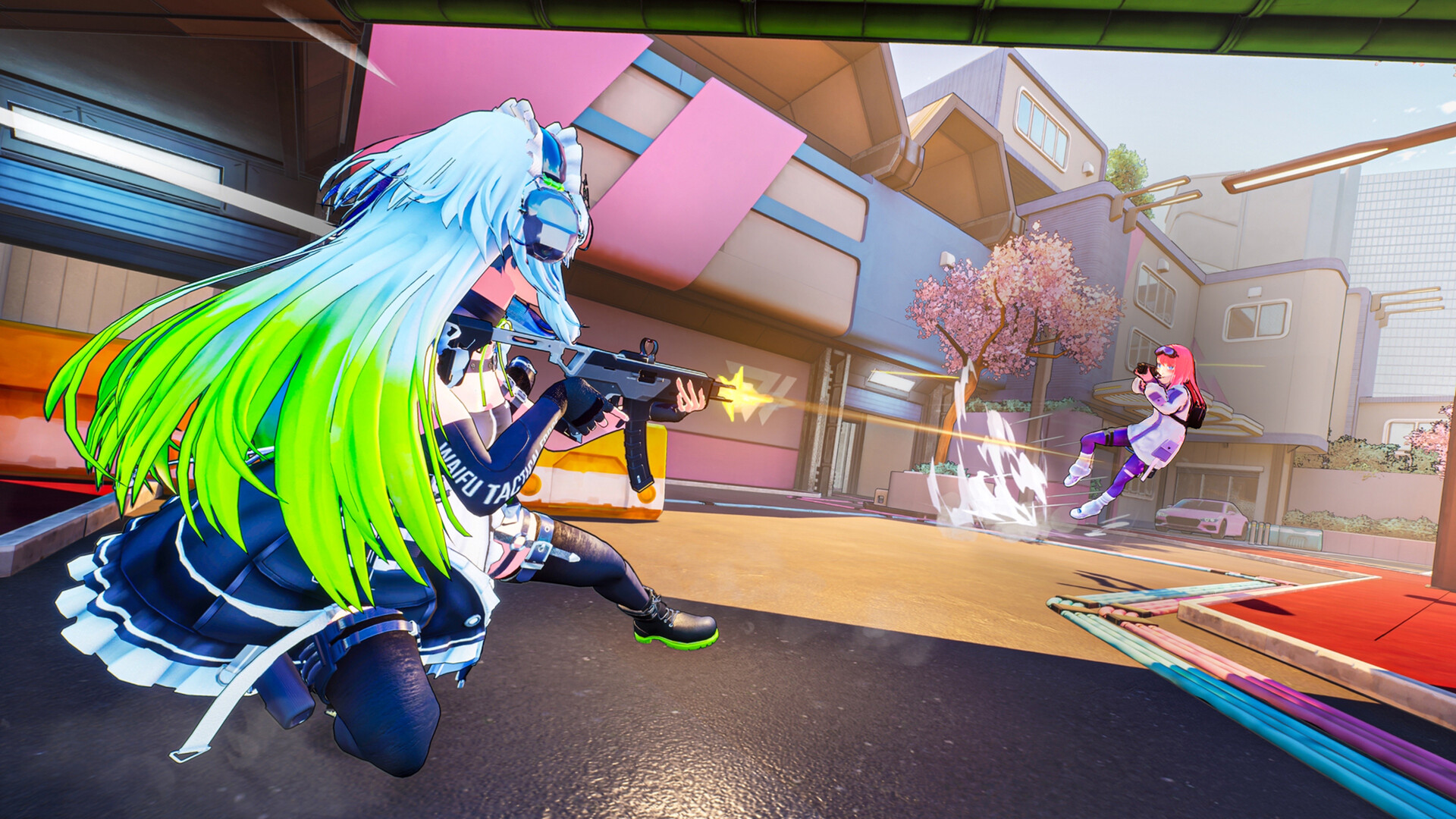
The Alienware x17 R2 gaming laptop comes in all sorts of configurations, ranging from a build with a display that has a mundane 1440p 165Hz refresh rate all the way up to a 1080p screen with a refresh rate of – are you ready for this? – 480Hz.
That’s just absurd. But for the last few weeks, I’ve been using that exact build, and while I’m confident in the fact that I never fully utilized the display, it’s been a lot of fun nonetheless.
Specs
Here are the specifications of the Alienware x17 R2 I’ve been testing:
Model: Alienware x17 R2 (P48E)Display: 17.3-inch FHD 480Hz (1920×1080)Processor: Intel Core i7–12700H 3.5GHz (24M cache, 4.7GHz Max Turbo)Graphics: Nvidia GeForce RTX 3080 Ti Laptop GPU, 16GB GDDR6Memory: 32GB DDR5 4,800MhzOS: Windows 11 HomeStorage: 1TB PCIe NVMe M.2 SSDWebcam: 720p with Windows Hello IR supportPorts: 2 x USB 3.2 Gen 1 ports with PowerShare, 1 x USB 3.2 Gen 2 Type-C with DisplayPort and Power Delivery, 1 x Thunderbolt 4 port with Power Delivery, 1 x 3.5mm audio jack, 1 x HDMI 2.1 port, 1 x mini DisplayPort 1.4, 1 x RJ45 Ethernet port, 1 x microSD card slotConnectivity: WiFi 6E 802.11ax, Bluetooth 5.2Dimensions: 15.72 x 11.79 x .82-inches (WxDxH)Weight: 6.65-poundsPrice: $3,699 as configured
The test sample I received is one of the higher-end builds available, but you can kit out an x17 R2 to your liking ranging from 16GB of memory all the way up to 64GB. Or SSD storage that starts at 512GB and maxes out at a whopping 4TB, with a GPU ranging from a 3060 to a 3080 Ti.
Alienware x17 R2 – Design
There’s something to be said about Alienware’s approach to design – with the honeycomb-like cutouts on the laptop deck, or the lunar white housing with an alien’s face and the number 17 etched on the lid, highlighted by an RGB LED that encircles the rear of the laptop where all of the ports are. Alienware hasn’t drifted from that basic design much over the last few years, and it’s definitely grown on me.
There is one aspect of x17 R2’s design that I’m a big fan of – nearly all of the ports are on the rear of the laptop. Both sides of the housing are virtually portless, save for the charge port on the left side and a 3.5mm audio jack on the right, both of which are as far back as possible. The rear of the housing is home to two USB 3.2 Gen 1 ports with PowerShare, a USB 3.2 Gen 2 Type-C with DisplayPort and Power Delivery, a Thunderbolt 4 port with Power Delivery, an HDMI 2.1 port, a mini DisplayPort 1.4, an Ethernet port, and a microSD card slot.
There are two changes I’d make to how the ports are set up on the R2. First, I’d move the microSD card slot to either side of the housing. If you frequently need to move files off of a microSD card, having to access the rear of the laptop is going to get annoying. To me, having all of the ports on the backside of the laptop is ideal when you’re using the laptop in a semi-permanent arrangement.
The second thing is to do something with the LED light ring that surrounds the ports. When you’re trying to look at the back of the laptop and find a port, the light is so bright it’s blinding and you can’t see any of the ports. I’ve had to turn off the light on a few occasions just to figure out where to plug in an external hard drive or Ethernet cable. I dig the design and the look of the laptop with the light, but it’s fighting easy access for practically every port on the x17 R2.
As for size and toting around the x17 R2, well, you’re going to want to do some extra push-ups before tossing this in your backpack. It measures a respectable 15.72 x 11.79 x .82-inches and weighs between 6.54 and 7.05 pounds, depending on the model.
That overall size is to accommodate the 17.3-inch Full High Definition display with an impressively fast 480Hz refresh rate. When you think about just how fast that refresh rate is, you realize it’s almost too fast. Actually, it is too fast, and you’d be hard-pressed to fully take advantage of it while gaming. But more on that later.
Opening the lid you’ll find a full-size keyboard sans number pad, with chiclet keys featuring switches that were co-developed with Cherry and have a pleasant audible click. Above the keyboard is the honeycomb battery I referenced earlier, along with an RGB-lit alien face power button.
Below the keyboard is a decently sized trackpad that’s good enough to get the basic job done, but for more labor-intensive tasks you’ll want a dedicated mouse.
The display is surrounded by relatively chunky bezels, with a 720p webcam along the top of the display’s housing.
Overall, the design of the x17 R2 is exactly what you’d expect from Alienware. I do wish, however, there was at least a dark gray or matte black color option. The lunar white is bound to get dirty over time.
Alienware x17 R2 – Performance and gaming
Inside the x17 R2 is a powerhouse of components. You can tweak the configuration to your liking, but the review sample I received had a 12th Gen Intel Core i7–12700H, a Nvidia GeForce RTX 3080 Ti with 16GB of GDDR6 memory, 32GB of GDDR5 4,800 MHz memory and a 1TB SSD. As a reminder, all of that powers a 1080p display with a refresh rate of 480Hz. Absurdity on paper.
With a high-end price tag and parts list, performance should be impressive, right? Right! And the x17 R2 delivers on that promise. Here’s a quick comparison chart showing how the x17 R2 faired in IGN’s standard benchmark gauntlet when put up against two other RTX 3080 Ti-powered systems: the Asus ROG Zephyrus Duo 16 with an AMD Ryzen 9 6900HX and the Gigabyte Aero 16 with the Intel Core i9–12900HK. Mind you, both of those laptops, as tested, started at $4,399. Not cheap.
As you can see, the x17 R2 was either within a few points or flat-out surpassed both laptops across the board. I was most surprised by the R2’s 7,209 PCMark 10 score, which was the lowest out of the three, with the Duo 16 scoring 7,311 and the Aero 16 scoring 7,560, considering that the R2 had performed so well in all the other tests.
For day-to-day use, the R2 has been a workhorse. I left it primarily set up on a desk and didn’t move it around the house a lot, but I spent some time with it on my lap while browsing the web and watching some YouTube videos. It’s a heavy boy. The R2 handled whatever I threw at it. From casual use to multitasking between multiple tabs, installing various apps and games, and streaming music – all without any hiccups or performance issues.
As far as gaming goes, the x17 R2 delivers. I spent a good bit of time playing Fortnite, with and without headphones, and was blown away by the performance of the x17 R2. With all graphical settings set to Epic, I consistently saw frame rates in the high 200s to low 300s. Granted, that’s nowhere near the screen’s 480Hz speed, but it’s impressive nonetheless.
The saturation and colors of the display are good, but nothing overly impressive. And I’d love for the display to be brighter – it often felt a little too dim for my liking. Actually, what I’d rather have is a higher-resolution display than a screen with a refresh rate that’s certainly not going to be used to its full extent. Of course, that spec is also available on other R2 configurations – either 1440p at 165Hz or 4K at 120Hz.
I really like the feel of the keyboard and the switches on the x17 R2. The keys feel crisp, if that makes sense, both when typing and gaming. The speakers are plenty loud enough for daily use, but once the fans kick on during resource-intensive tasks like gaming you’ll want to put on headphones to ensure you don’t miss anything.
The base configuration of the x17 R2 comes with 512GB of storage, and that’s a good starting point for a gaming laptop. I’m glad this sample had a 1TB hard drive, though. It doesn’t take a whole lot to fill up even a 1TB drive anymore.
Alienware x17 R2 – Battery life
Alienware doesn’t provide a battery life estimate for the x17 R2, but touts the various power modes as a means to ensure you can tailor performance and battery life to your needs.
In daily use, the x17 R2 would power through a few hours of work before needing to be plugged in.
Using PCMark 10’s Modern Office battery benchmark, the x17 R2’s battery went from fully charged to depleted in just under three hours. More specifically, 2 hours and 55 minutes. That’s right in line with the battery life performance in the same benchmark for the Duo 16 and Aero 16.
Alienware x17 R2 – Software
In the past, I’ve applauded Alienware for its light-handed approach to pre-installing software on its computers, and that trend continues with the x17 R2. There are only a small handful of apps that come installed. There’s the Alienware Command Center, along with a few other Alienware utilities like a dedicated app for installing the latest BIOS and other firmware from Dell. You won’t find any sort of antivirus software installed on the R2.
That said, I still struggle to use the Alienware Command Center app, which is where you go to view your system stats or change the color scheme of the keyboard and the rest of the RGB lighting aspects of the R2. The lunar white color of the app itself makes it hard to see text, buttons and other information on the screen. I have to manually toggle the app to dark mode in order to use it.






